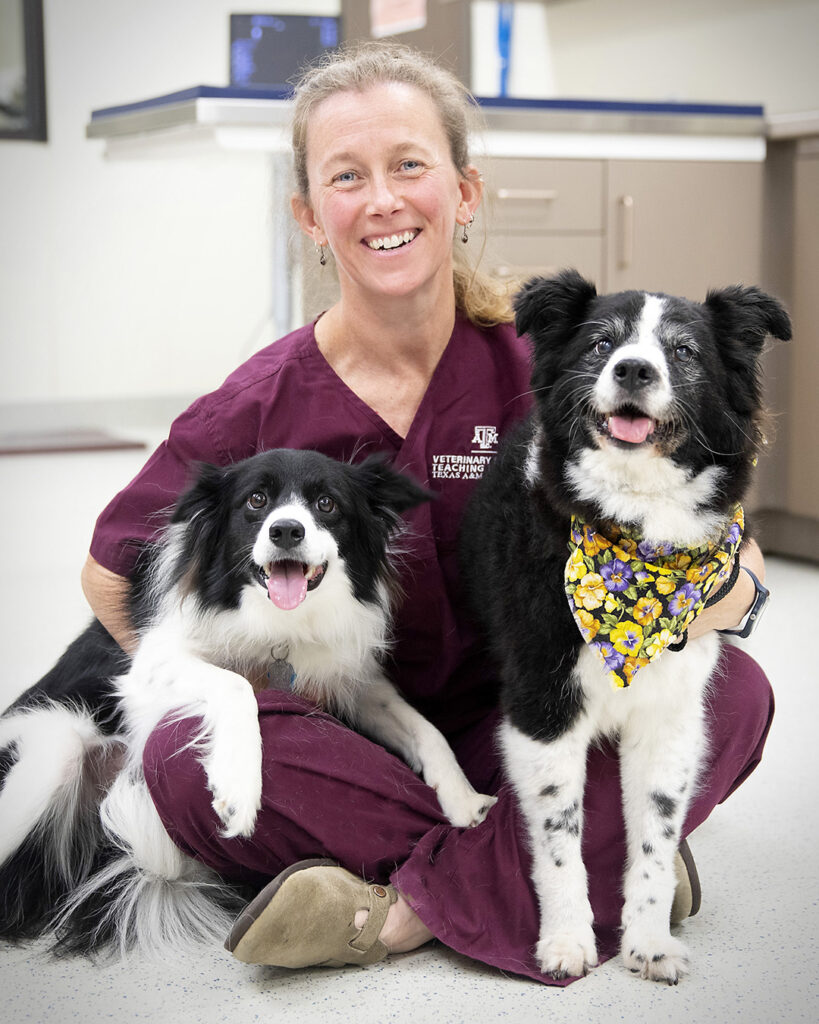
For many people and pets, spring (aka “allergy season”) is a time of excessive sneezing, itching, and scratching. For some pets, however, their allergy season is never ending, lasting into summer, fall, and winter.
Veterinary dermatologist Dr. Adam Patterson, a clinical associate professor at the Texas A&M College of Veterinary Medicine & Biomedical Sciences, discusses allergic skin disease and how to best relieve the itch for affected pets, which can include dogs, cats, horses, and other species.
“Environmental allergy, aka atopic dermatitis, is a skin condition in which the immune system overly reacts to the pollens of grasses, trees, and weeds, as well as to indoor substances like house dust mites, mold, and dander,” he said. “Clinical signs may be seasonal or year-round in presentation.”
Of these allergens, the most common to affect pets in central Texas are dust mites and grasses, as well as cedar and oak pollen. Many pets are also allergic to flea bites, which can perpetuate the effects of atopic dermatitis.
Unlike people who experience lots of sneezing and runny eyes with allergies, pets’ main sign of atopic dermatitis is itching. In addition to scratching, pets may try to relieve an itch by rubbing, licking, chewing, biting, head shaking, or scooting.
“Common itchy body areas include the face, ears, paws, armpits, groin, rump, and anal region,” Patterson said. “Every pet has its own itch tolerance, which means the intensity and reason(s) for your pet’s itch may not be the same as another animal.”
Recurring bacterial and/or yeast skin infections—which appear as red and/or black skin, red bumps, pimples, scabs, dander, hair loss, or thickening skin—often accompany allergic skin disease. Similarly, owners may also notice recurring ear infections that cause itchy red and swollen ears that may leak pus.
If a pet is showing any of these signs, a veterinarian can help determine the various causes.
If atopic dermatitis is determined to be the cause, in addition to itch relief medications, initial treatments may include baths, flea prevention, and anti-infection medication, as well as a possible change in diet.
“Given the safety and effect of many allergy medications today, dogs in central Texas should have allergy signs for at least five to six months out of the year before considering skin testing for environmental allergies in order for the diagnostic tests and treatment to be cost effective over the long haul,” Patterson said.
If the condition is left untreated, it can have mild to serious consequences.
“It can cause unrelenting itch, odor, remodeling of the ear canal (an increase in skin thickness and collapse of the ear canal), and multi-antibiotic resistant bacterial skin infections,” Patterson said. “Ear canal removal, an expensive surgery, may be required.”
To avoid excessive, costly treatments and extra discomfort for your pet, make sure to talk to your veterinarian if your pet is showing signs of an environmental allergy to determine a plan, which could even include referral to a veterinary dermatologist. Getting rid of that annoying itch will help make spring, and possibly the entire year, more enjoyable for everyone.
Pet Talk is a service of the College of Veterinary Medicine & Biomedical Sciences, Texas A&M University. Stories can be viewed on the web at vetmed.tamu.edu/news/pet-talk. Suggestions for future topics may be directed to editor@cvm.tamu.edu.




























